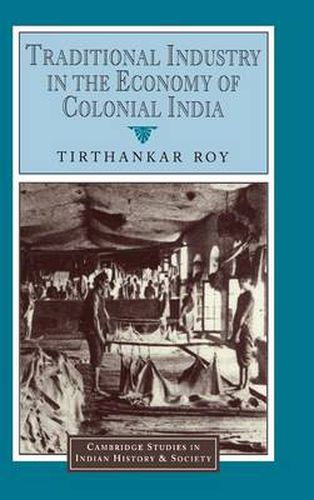Readings Newsletter
Become a Readings Member to make your shopping experience even easier.
Sign in or sign up for free!
You’re not far away from qualifying for FREE standard shipping within Australia
You’ve qualified for FREE standard shipping within Australia
The cart is loading…






The majority of workers in South Asia are employed in industries that rely on manual labour and craft skills. Some of these industries have existed for centuries and survived great changes in consumption and technology over the last 150 years. In earlier studies, historians of the region focused on mechanized rather than craft industries, arguing that traditional manufacturing was destroyed or devitalized during the colonial period, and that ‘modern’ industry is substantially different. Exploring new material from research into five traditional industries, Tirthankar Roy’s book contests these notions, demonstrating that while traditional industry did evolve during the Industrial Revolution, these transformations had a positive rather than destructive effect on manufacturing generally. In fact, the book suggests, the major industries in post-independence India were shaped by such transformations. Tirthankar Roy’s book offers new and penetrating insights into India’s economic and social history.
$9.00 standard shipping within Australia
FREE standard shipping within Australia for orders over $100.00
Express & International shipping calculated at checkout
The majority of workers in South Asia are employed in industries that rely on manual labour and craft skills. Some of these industries have existed for centuries and survived great changes in consumption and technology over the last 150 years. In earlier studies, historians of the region focused on mechanized rather than craft industries, arguing that traditional manufacturing was destroyed or devitalized during the colonial period, and that ‘modern’ industry is substantially different. Exploring new material from research into five traditional industries, Tirthankar Roy’s book contests these notions, demonstrating that while traditional industry did evolve during the Industrial Revolution, these transformations had a positive rather than destructive effect on manufacturing generally. In fact, the book suggests, the major industries in post-independence India were shaped by such transformations. Tirthankar Roy’s book offers new and penetrating insights into India’s economic and social history.